Tensor Factorization of Brain Structural Graph for Unsupervised Classification in Multiple Sclerosis
Berardino Barile,
Marzullo Aldo,
Claudio Stamile,
Françoise Durand-Dubief,
Dominique Sappey-Marinier
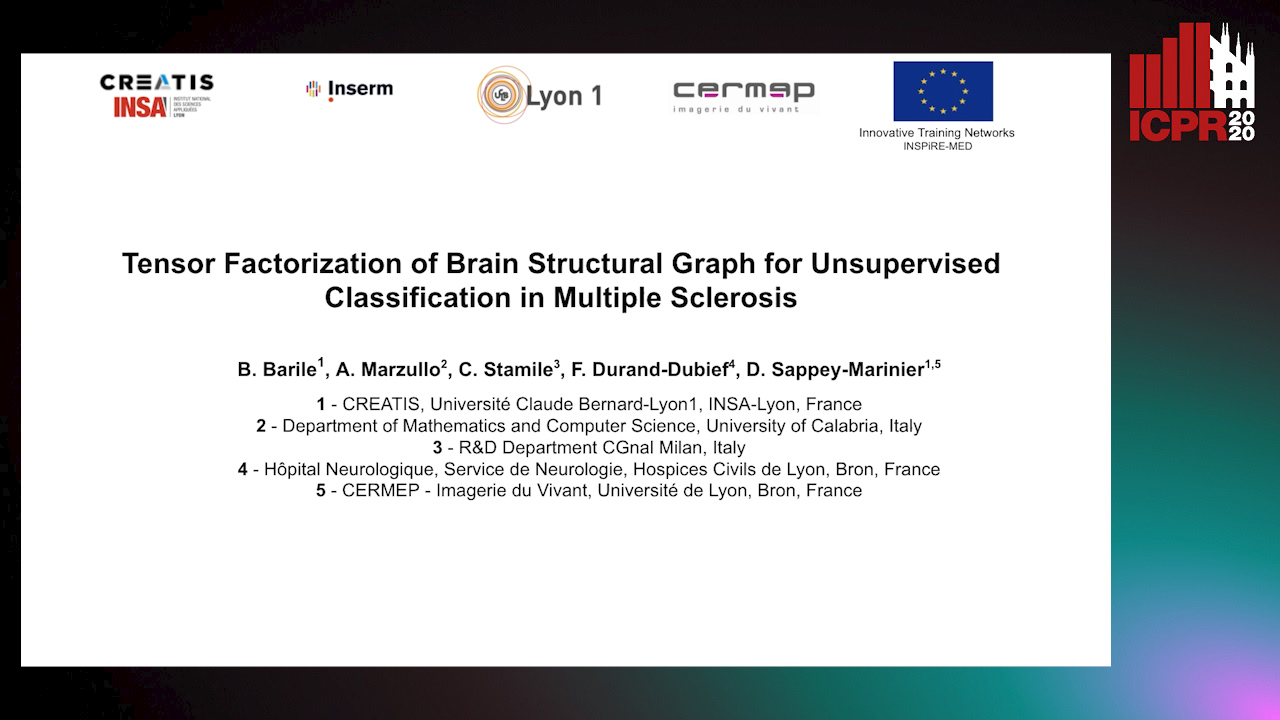
Auto-TLDR; A Fully Automated Tensor-based Algorithm for Multiple Sclerosis Classification based on Structural Connectivity Graph of the White Matter Network
Similar papers
Encoding Brain Networks through Geodesic Clustering of Functional Connectivity for Multiple Sclerosis Classification
Muhammad Abubakar Yamin, Valsasina Paola, Michael Dayan, Sebastiano Vascon, Tessadori Jacopo, Filippi Massimo, Vittorio Murino, A Rocca Maria, Diego Sona
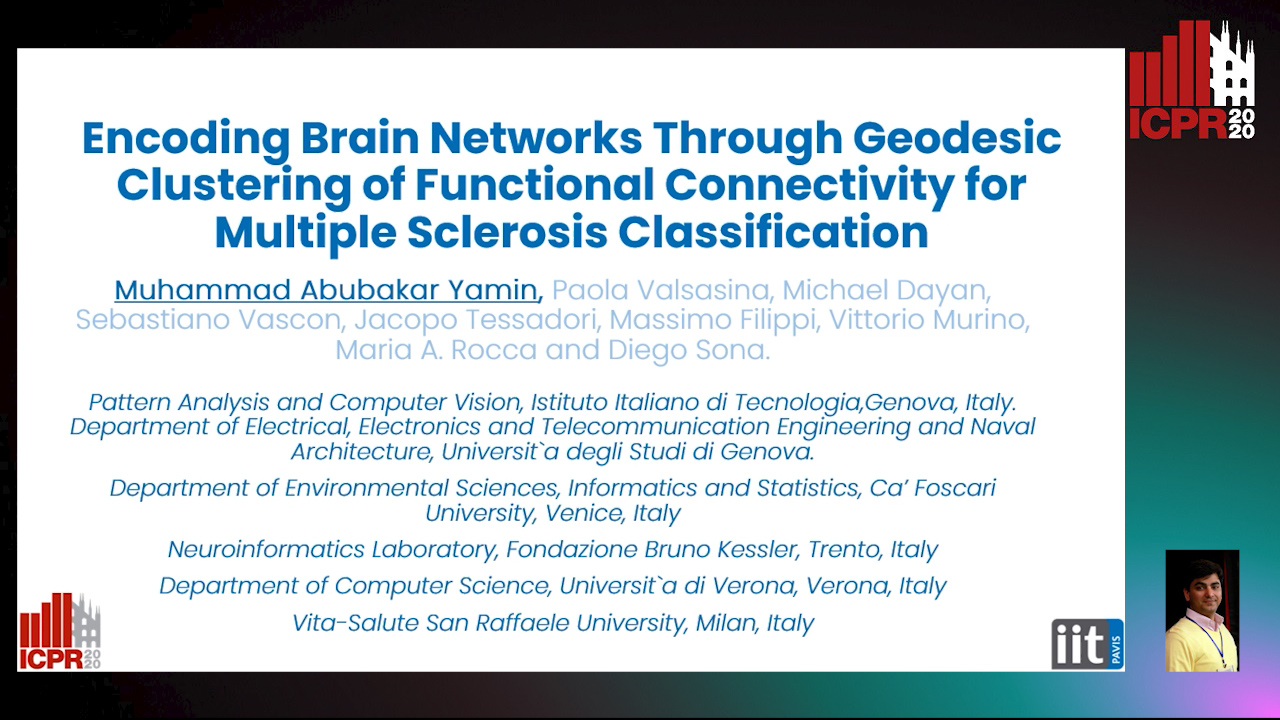
Auto-TLDR; Geodesic Clustering of Connectivity Matrices for Multiple Sclerosis Classification
Abstract Slides Poster Similar
FMRI Brain Networks As Statistical Mechanical Ensembles
Jianjia Wang, Hui Wu, Edwin Hancock

Auto-TLDR; Microcanonical Ensemble Methods for FMRI Brain Networks for Alzheimer's Disease
Abstract Slides Poster Similar
A Novel Computer-Aided Diagnostic System for Early Assessment of Hepatocellular Carcinoma
Ahmed Alksas, Mohamed Shehata, Gehad Saleh, Ahmed Shaffie, Ahmed Soliman, Mohammed Ghazal, Hadil Abukhalifeh, Abdel Razek Ahmed, Ayman El-Baz

Auto-TLDR; Classification of Liver Tumor Lesions from CE-MRI Using Structured Structural Features and Functional Features
Abstract Slides Poster Similar
Longitudinal Feature Selection and Feature Learning for Parkinson’s Disease Diagnosis and Prediction
Haijun Lei, Zhongwei Huang, Xiaohua Xiao, Yi Lei, En-Leng Tan, Baiying Lei, Shiqi Li
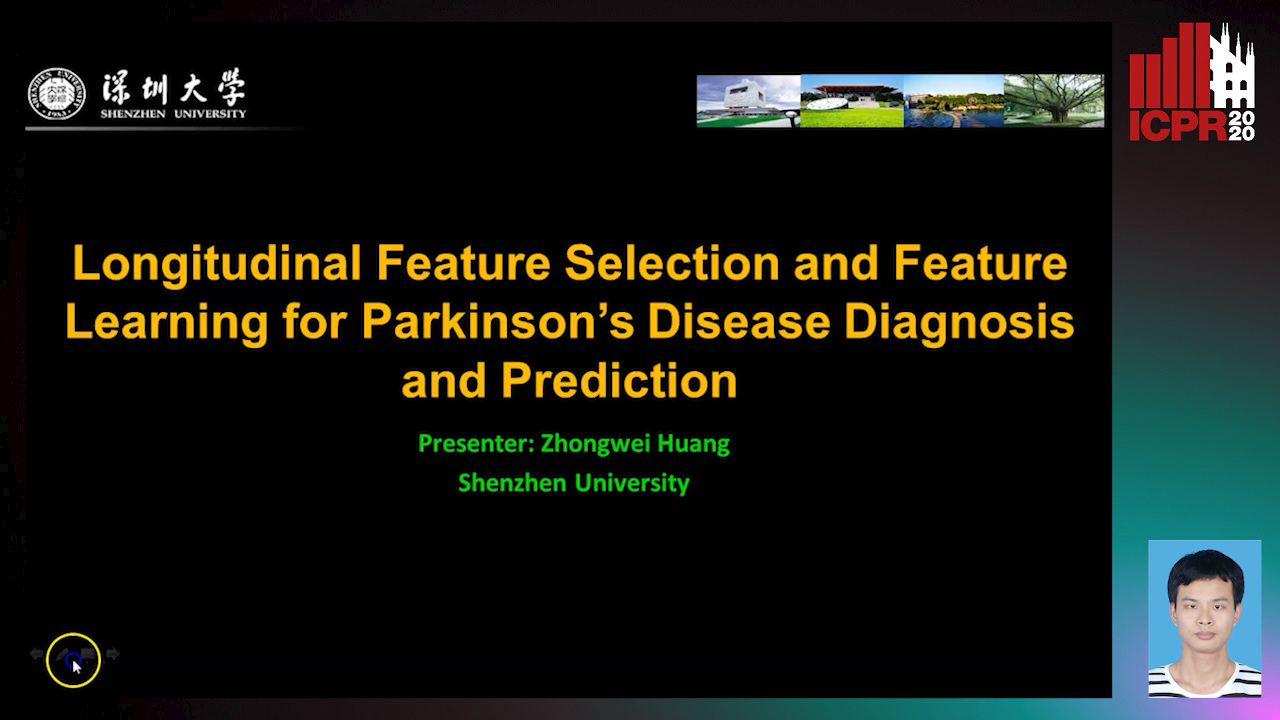
Auto-TLDR; Joint Learning from Multiple Modalities and Relations for Joint Disease Diagnosis and Prediction in Parkinson's Disease
Abstract Slides Poster Similar
A Riemannian Framework for Detecting Stimulus-Relevant Fiber Pathways
Jingyong Su, Linlin Tang, Zhipeng Yang, Mengmeng Guo
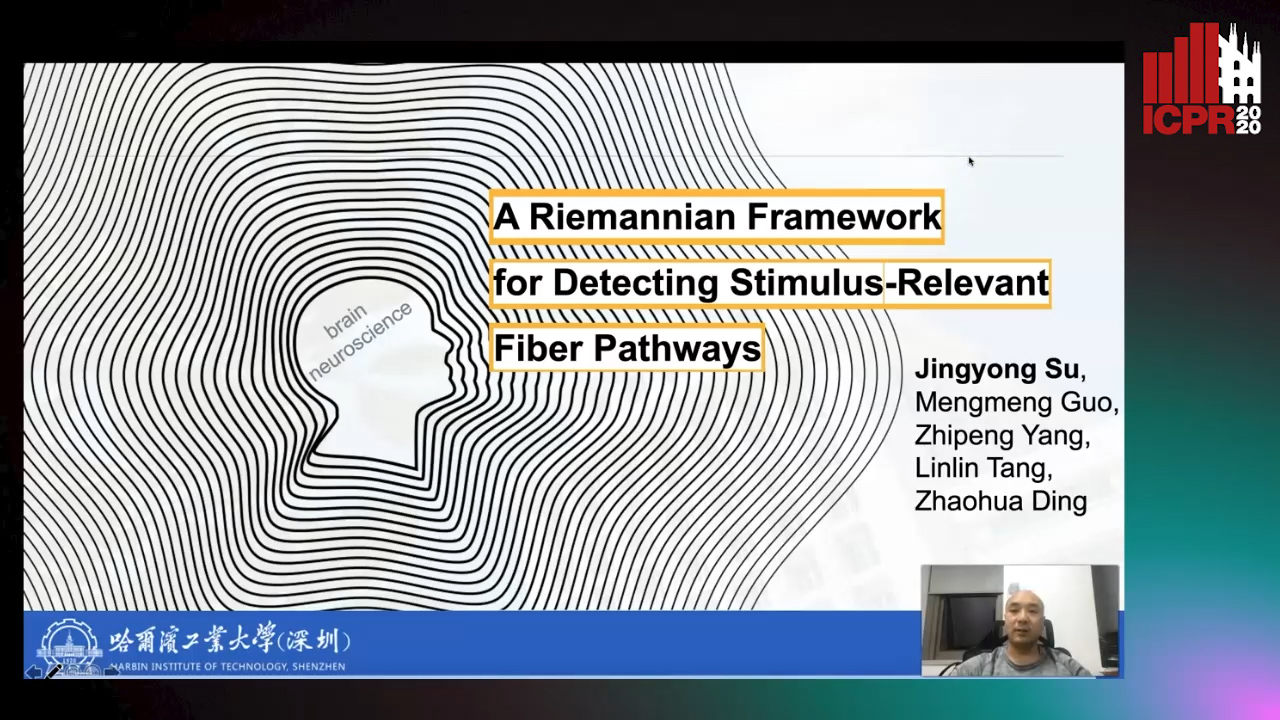
Auto-TLDR; Clustering Task-Specific Fiber Pathways in Functional MRI using BOLD Signals
PIF: Anomaly detection via preference embedding
Filippo Leveni, Luca Magri, Giacomo Boracchi, Cesare Alippi

Auto-TLDR; PIF: Anomaly Detection with Preference Embedding for Structured Patterns
Abstract Slides Poster Similar
Estimating Static and Dynamic Brain Networks by Kulback-Leibler Divergence from fMRI Data
Gonul Degirmendereli, Fatos Yarman Vural

Auto-TLDR; A Novel method to estimate static and dynamic brain networks using Kulback- Leibler divergence using fMRI data
Thermal Characterisation of Unweighted and Weighted Networks
Jianjia Wang, Hui Wu, Edwin Hancock

Auto-TLDR; Thermodynamic Characterisation of Networks as Particles of the Thermal System
Abstract Slides Poster Similar
Detecting Rare Cell Populations in Flow Cytometry Data Using UMAP
Lisa Weijler, Markus Diem, Michael Reiter
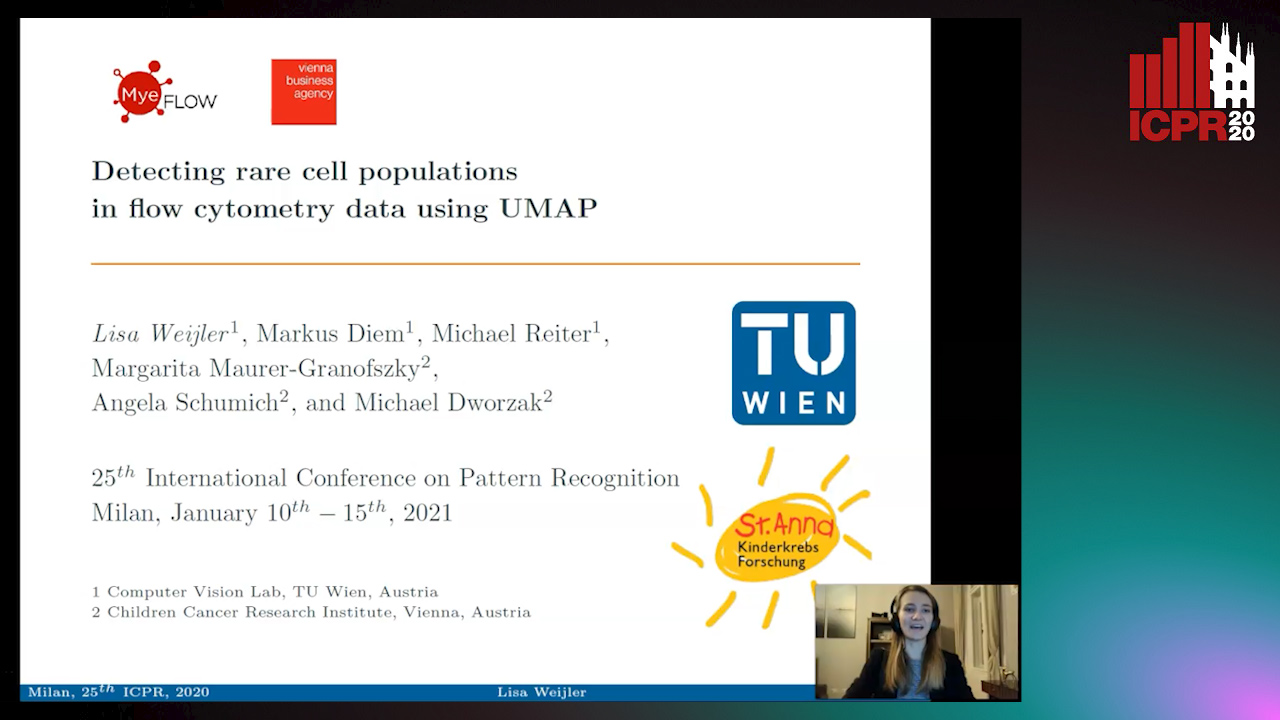
Auto-TLDR; Unsupervised Manifold Approximation and Projection for Small Cell Population Detection in Flow cytometry Data
Abstract Slides Poster Similar
Automatic Semantic Segmentation of Structural Elements related to the Spinal Cord in the Lumbar Region by Using Convolutional Neural Networks
Jhon Jairo Sáenz Gamboa, Maria De La Iglesia-Vaya, Jon Ander Gómez

Auto-TLDR; Semantic Segmentation of Lumbar Spine Using Convolutional Neural Networks
Abstract Slides Poster Similar
A Deep Learning Approach for the Segmentation of Myocardial Diseases
Khawala Brahim, Abdull Qayyum, Alain Lalande, Arnaud Boucher, Anis Sakly, Fabrice Meriaudeau

Auto-TLDR; Segmentation of Myocardium Infarction Using Late GADEMRI and SegU-Net
Abstract Slides Poster Similar
Assortative-Constrained Stochastic Block Models
Daniel Gribel, Thibaut Vidal, Michel Gendreau
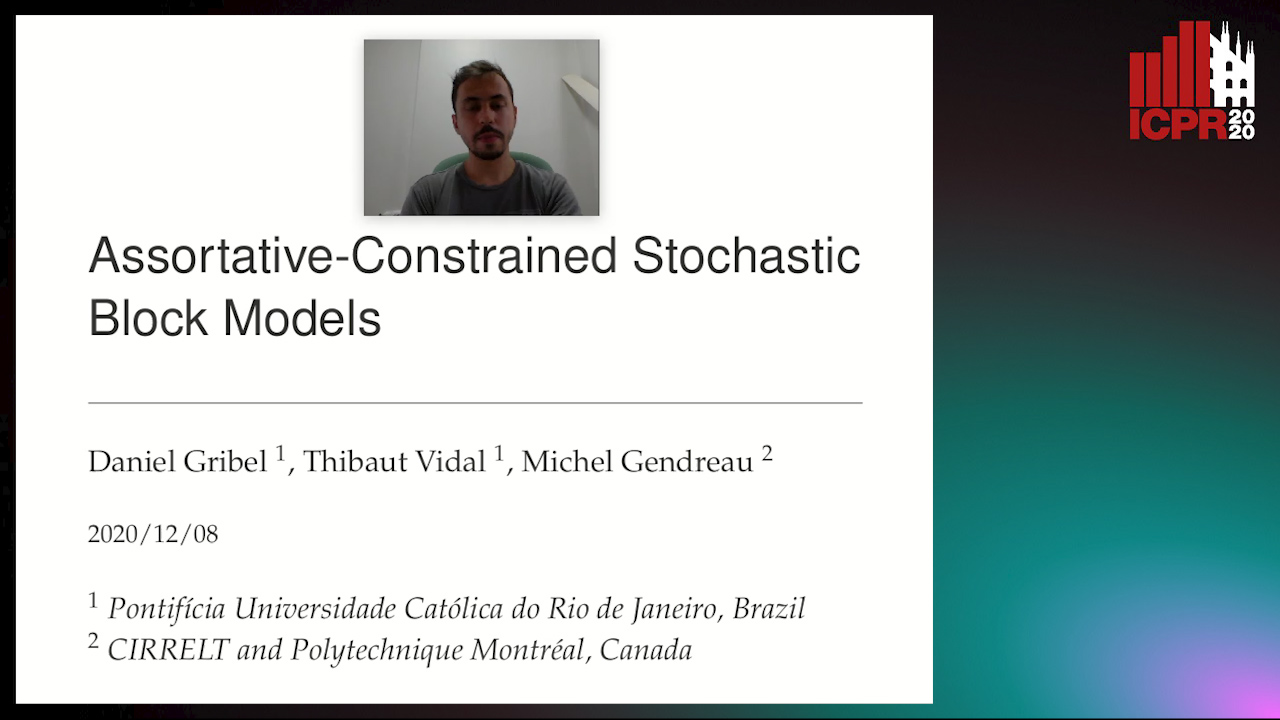
Auto-TLDR; Constrained Stochastic Block Models for Assortative Communities in Neural Networks
Abstract Slides Poster Similar
A Comparison of Neural Network Approaches for Melanoma Classification
Maria Frasca, Michele Nappi, Michele Risi, Genoveffa Tortora, Alessia Auriemma Citarella

Auto-TLDR; Classification of Melanoma Using Deep Neural Network Methodologies
Abstract Slides Poster Similar
One Step Clustering Based on A-Contrario Framework for Detection of Alterations in Historical Violins
Alireza Rezaei, Sylvie Le Hégarat-Mascle, Emanuel Aldea, Piercarlo Dondi, Marco Malagodi

Auto-TLDR; A-Contrario Clustering for the Detection of Altered Violins using UVIFL Images
Abstract Slides Poster Similar
Sketch-Based Community Detection Via Representative Node Sampling
Mahlagha Sedghi, Andre Beckus, George Atia

Auto-TLDR; Sketch-based Clustering of Community Detection Using a Small Sketch
Abstract Slides Poster Similar
Automatic Classification of Human Granulosa Cells in Assisted Reproductive Technology Using Vibrational Spectroscopy Imaging
Marina Paolanti, Emanuele Frontoni, Giorgia Gioacchini, Giorgini Elisabetta, Notarstefano Valentina, Zacà Carlotta, Carnevali Oliana, Andrea Borini, Marco Mameli

Auto-TLDR; Predicting Oocyte Quality in Assisted Reproductive Technology Using Machine Learning Techniques
Abstract Slides Poster Similar
Region and Relations Based Multi Attention Network for Graph Classification
Manasvi Aggarwal, M. Narasimha Murty

Auto-TLDR; R2POOL: A Graph Pooling Layer for Non-euclidean Structures
Abstract Slides Poster Similar
Prediction of Obstructive Coronary Artery Disease from Myocardial Perfusion Scintigraphy using Deep Neural Networks
Ida Arvidsson, Niels Christian Overgaard, Miguel Ochoa Figueroa, Jeronimo Rose, Anette Davidsson, Kalle Åström, Anders Heyden
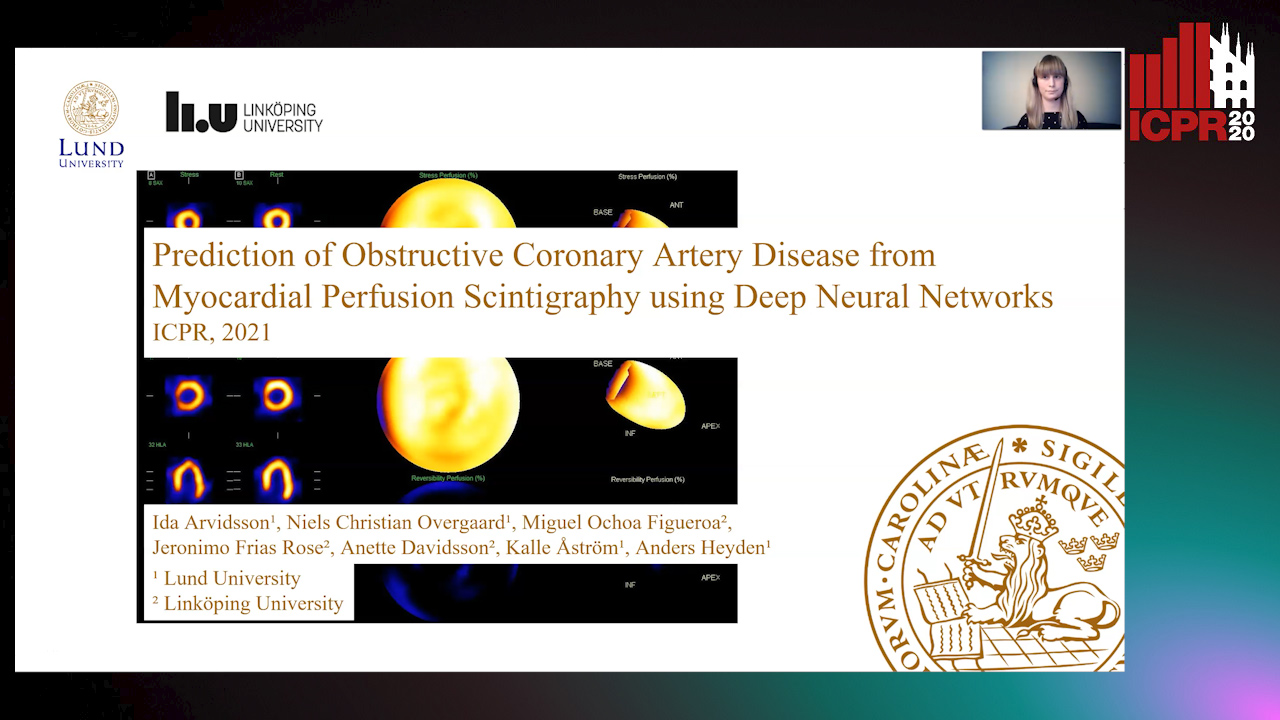
Auto-TLDR; A Deep Learning Algorithm for Multi-label Classification of Myocardial Perfusion Scintigraphy for Stable Ischemic Heart Disease
Abstract Slides Poster Similar
GraphBGS: Background Subtraction Via Recovery of Graph Signals
Jhony Heriberto Giraldo Zuluaga, Thierry Bouwmans

Auto-TLDR; Graph BackGround Subtraction using Graph Signals
Abstract Slides Poster Similar
Neural Machine Registration for Motion Correction in Breast DCE-MRI
Federica Aprea, Stefano Marrone, Carlo Sansone
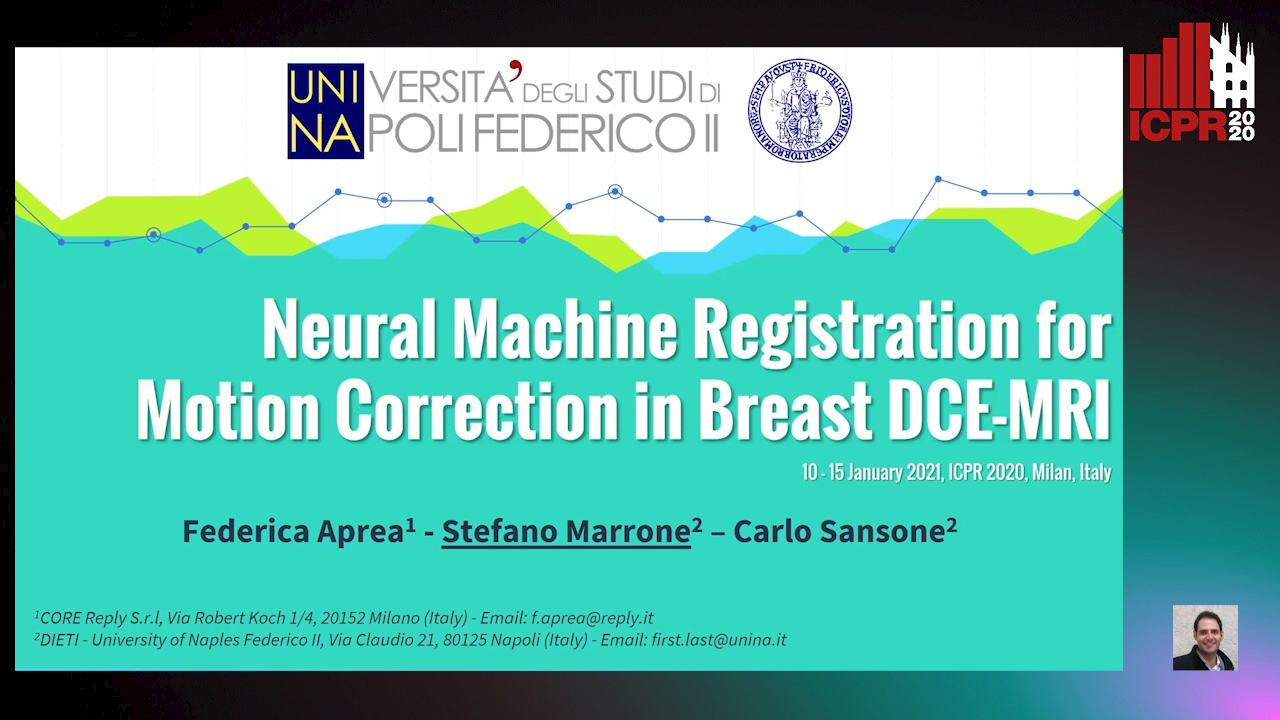
Auto-TLDR; A Neural Registration Network for Dynamic Contrast Enhanced-Magnetic Resonance Imaging
Abstract Slides Poster Similar
Detecting Anomalies from Video-Sequences: A Novel Descriptor
Giulia Orrù, Davide Ghiani, Maura Pintor, Gian Luca Marcialis, Fabio Roli

Auto-TLDR; Trit-based Measurement of Group Dynamics for Crowd Behavior Analysis and Anomaly Detection
Abstract Slides Poster Similar
A New Geodesic-Based Feature for Characterization of 3D Shapes: Application to Soft Tissue Organ Temporal Deformations
Karim Makki, Amine Bohi, Augustin Ogier, Marc-Emmanuel Bellemare

Auto-TLDR; Spatio-Temporal Feature Descriptors for 3D Shape Characterization from Point Clouds
Abstract Slides Poster Similar
Deep Convolutional Embedding for Digitized Painting Clustering
Giovanna Castellano, Gennaro Vessio

Auto-TLDR; A Deep Convolutional Embedding Model for Clustering Artworks
Abstract Slides Poster Similar
On Morphological Hierarchies for Image Sequences
Caglayan Tuna, Alain Giros, François Merciol, Sébastien Lefèvre

Auto-TLDR; Comparison of Hierarchies for Image Sequences
Abstract Slides Poster Similar
Deep Transfer Learning for Alzheimer’s Disease Detection
Nicole Cilia, Claudio De Stefano, Francesco Fontanella, Claudio Marrocco, Mario Molinara, Alessandra Scotto Di Freca

Auto-TLDR; Automatic Detection of Handwriting Alterations for Alzheimer's Disease Diagnosis using Dynamic Features
Abstract Slides Poster Similar
Assessing the Severity of Health States Based on Social Media Posts
Shweta Yadav, Joy Prakash Sain, Amit Sheth, Asif Ekbal, Sriparna Saha, Pushpak Bhattacharyya

Auto-TLDR; A Multiview Learning Framework for Assessment of Health State in Online Health Communities
Abstract Slides Poster Similar
Inferring Functional Properties from Fluid Dynamics Features
Andrea Schillaci, Maurizio Quadrio, Carlotta Pipolo, Marcello Restelli, Giacomo Boracchi

Auto-TLDR; Exploiting Convective Properties of Computational Fluid Dynamics for Medical Diagnosis
Abstract Slides Poster Similar
Deep Learning Based Sepsis Intervention: The Modelling and Prediction of Severe Sepsis Onset
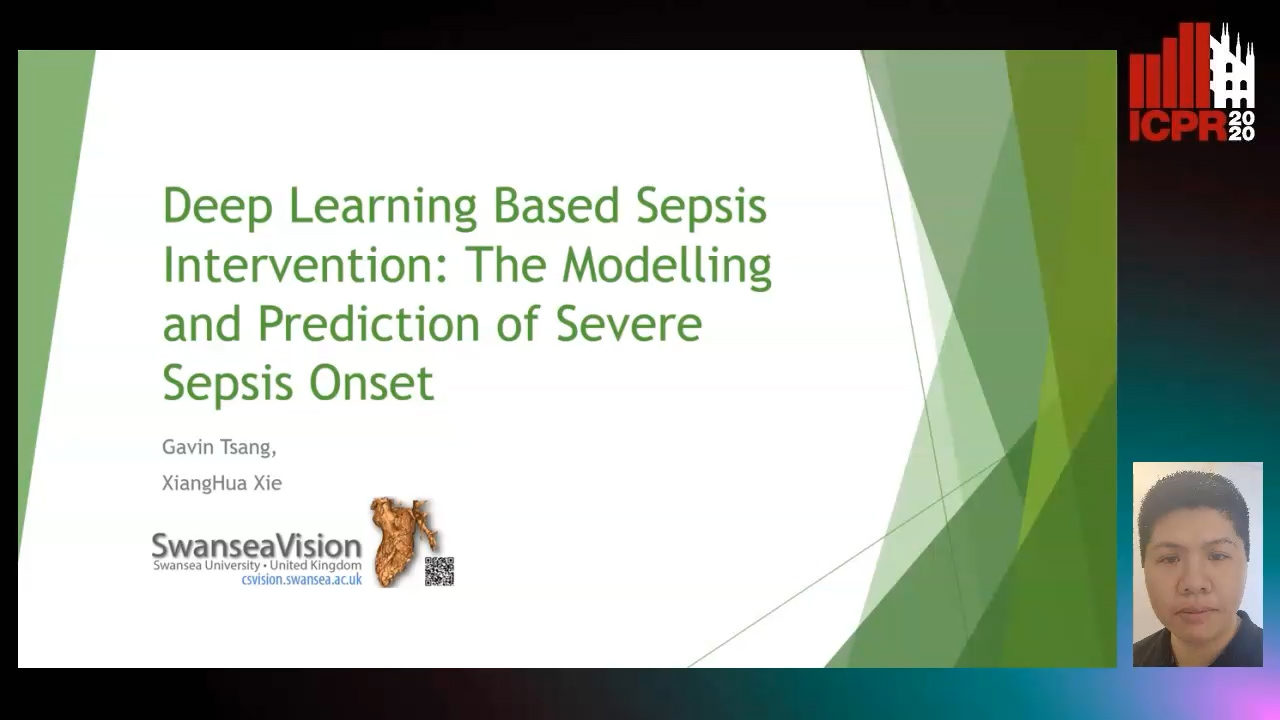
Auto-TLDR; Predicting Sepsis onset by up to six hours prior using a boosted cascading training methodology and adjustable margin hinge loss function
Abstract Slides Poster Similar
A General End-To-End Method for Characterizing Neuropsychiatric Disorders Using Free-Viewing Visual Scanning Tasks
Hong Yue Sean Liu, Jonathan Chung, Moshe Eizenman

Auto-TLDR; A general, data-driven, end-to-end framework that extracts relevant features of attentional bias from visual scanning behaviour and uses these features
Abstract Slides Poster Similar
Electroencephalography Signal Processing Based on Textural Features for Monitoring the Driver’s State by a Brain-Computer Interface
Giulia Orrù, Marco Micheletto, Fabio Terranova, Gian Luca Marcialis

Auto-TLDR; One-dimensional Local Binary Pattern Algorithm for Estimating Driver Vigilance in a Brain-Computer Interface System
Abstract Slides Poster Similar
Planar 3D Transfer Learning for End to End Unimodal MRI Unbalanced Data Segmentation
Martin Kolarik, Radim Burget, Carlos M. Travieso-Gonzalez, Jan Kocica

Auto-TLDR; Planar 3D Res-U-Net Network for Unbalanced 3D Image Segmentation using Fluid Attenuation Inversion Recover
Temporal Pattern Detection in Time-Varying Graphical Models
Federico Tomasi, Veronica Tozzo, Annalisa Barla

Auto-TLDR; A dynamical network inference model that leverages on kernels to consider general temporal patterns
Abstract Slides Poster Similar
Automatic Tuberculosis Detection Using Chest X-Ray Analysis with Position Enhanced Structural Information
Hermann Jepdjio Nkouanga, Szilard Vajda

Auto-TLDR; Automatic Chest X-ray Screening for Tuberculosis in Rural Population using Localized Region on Interest
Abstract Slides Poster Similar
A Systematic Investigation on Deep Architectures for Automatic Skin Lesions Classification
Pierluigi Carcagni, Marco Leo, Andrea Cuna, Giuseppe Celeste, Cosimo Distante

Auto-TLDR; RegNet: Deep Investigation of Convolutional Neural Networks for Automatic Classification of Skin Lesions
Abstract Slides Poster Similar
Confidence Calibration for Deep Renal Biopsy Immunofluorescence Image Classification
Federico Pollastri, Juan Maroñas, Federico Bolelli, Giulia Ligabue, Roberto Paredes, Riccardo Magistroni, Costantino Grana

Auto-TLDR; A Probabilistic Convolutional Neural Network for Immunofluorescence Classification in Renal Biopsy
Abstract Slides Poster Similar
A Novel Random Forest Dissimilarity Measure for Multi-View Learning
Hongliu Cao, Simon Bernard, Robert Sabourin, Laurent Heutte

Auto-TLDR; Multi-view Learning with Random Forest Relation Measure and Instance Hardness
Abstract Slides Poster Similar
Influence of Event Duration on Automatic Wheeze Classification
Bruno M Rocha, Diogo Pessoa, Alda Marques, Paulo Carvalho, Rui Pedro Paiva

Auto-TLDR; Experimental Design of the Non-wheeze Class for Wheeze Classification
Abstract Slides Poster Similar
EasiECG: A Novel Inter-Patient Arrhythmia Classification Method Using ECG Waves
Chuanqi Han, Ruoran Huang, Fang Yu, Xi Huang, Li Cui

Auto-TLDR; EasiECG: Attention-based Convolution Factorization Machines for Arrhythmia Classification
Abstract Slides Poster Similar
A Heuristic-Based Decision Tree for Connected Components Labeling of 3D Volumes
Maximilian Söchting, Stefano Allegretti, Federico Bolelli, Costantino Grana

Auto-TLDR; Entropy Partitioning Decision Tree for Connected Components Labeling
Abstract Slides Poster Similar
Exploring Spatial-Temporal Representations for fNIRS-based Intimacy Detection via an Attention-enhanced Cascade Convolutional Recurrent Neural Network
Chao Li, Qian Zhang, Ziping Zhao

Auto-TLDR; Intimate Relationship Prediction by Attention-enhanced Cascade Convolutional Recurrent Neural Network Using Functional Near-Infrared Spectroscopy
Abstract Slides Poster Similar
Leveraging Unlabeled Data for Glioma Molecular Subtype and Survival Prediction
Nicholas Nuechterlein, Beibin Li, Mehmet Saygin Seyfioglu, Sachin Mehta, Patrick Cimino, Linda Shapiro

Auto-TLDR; Multimodal Brain Tumor Segmentation Using Unlabeled MR Data and Genomic Data for Cancer Prediction
Abstract Slides Poster Similar
The eXPose Approach to Crosslier Detection
Antonio Barata, Frank Takes, Hendrik Van Den Herik, Cor Veenman

Auto-TLDR; EXPose: Crosslier Detection Based on Supervised Category Modeling
Abstract Slides Poster Similar
A Multi-Task Multi-View Based Multi-Objective Clustering Algorithm
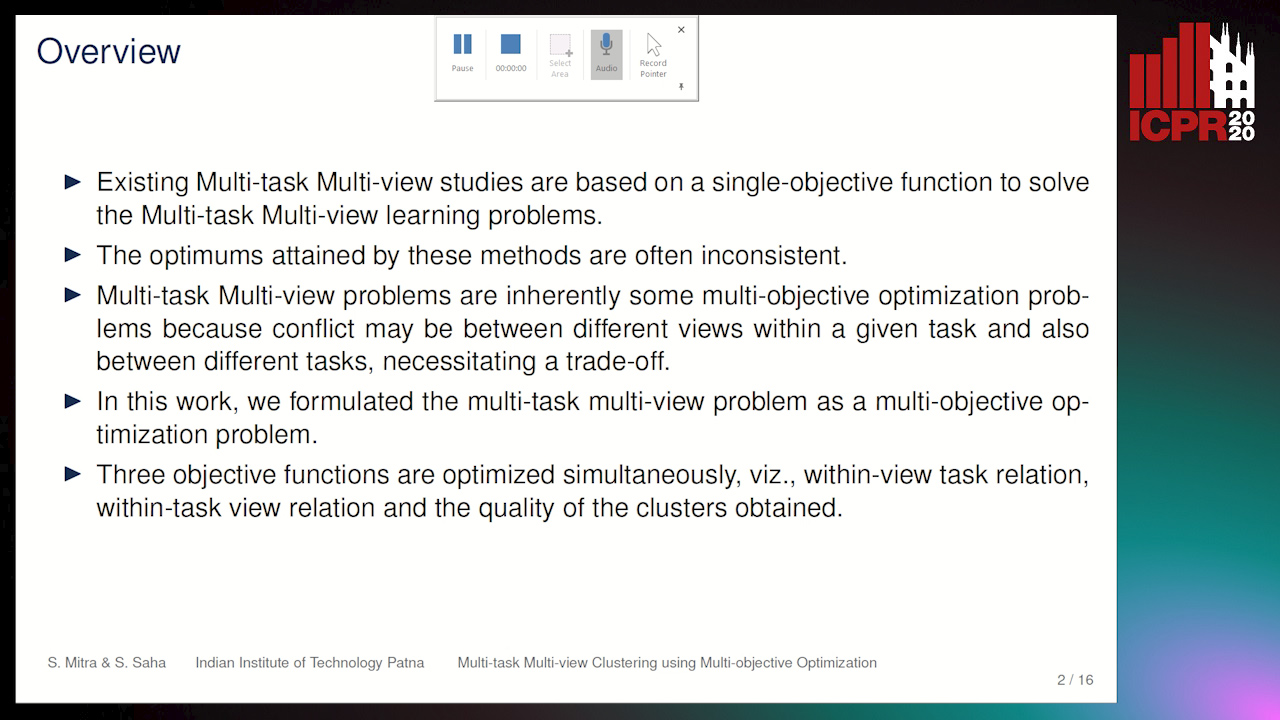
Auto-TLDR; MTMV-MO: Multi-task multi-view multi-objective optimization for multi-task clustering
Abstract Slides Poster Similar
Epileptic Seizure Prediction: A Semi-Dilated Convolutional Neural Network Architecture
Ramy Hussein, Rabab K. Ward, Soojin Lee, Martin Mckeown
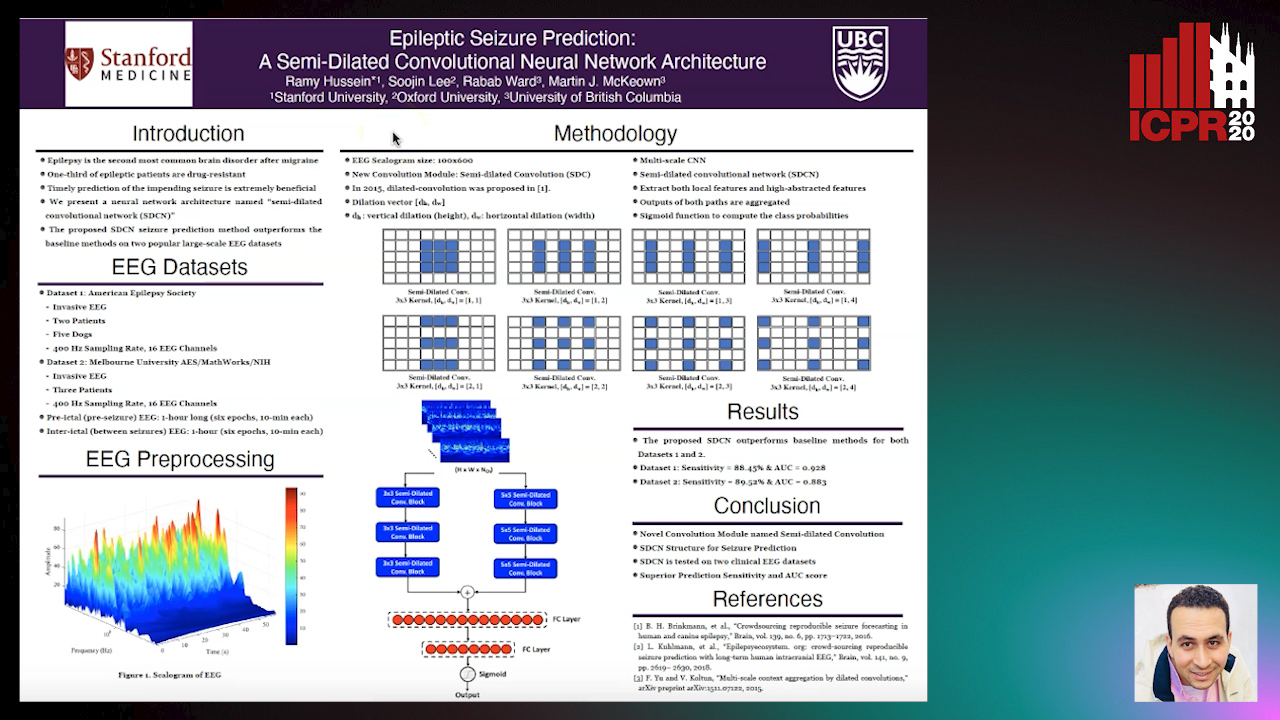
Auto-TLDR; Semi-Dilated Convolutional Network for Seizure Prediction using EEG Scalograms
Social Network Analysis Using Knowledge-Graph Embeddings and Convolution Operations
Bonaventure Chidube Molokwu, Shaon Bhatta Shuvo, Ziad Kobti, Narayan C. Kar
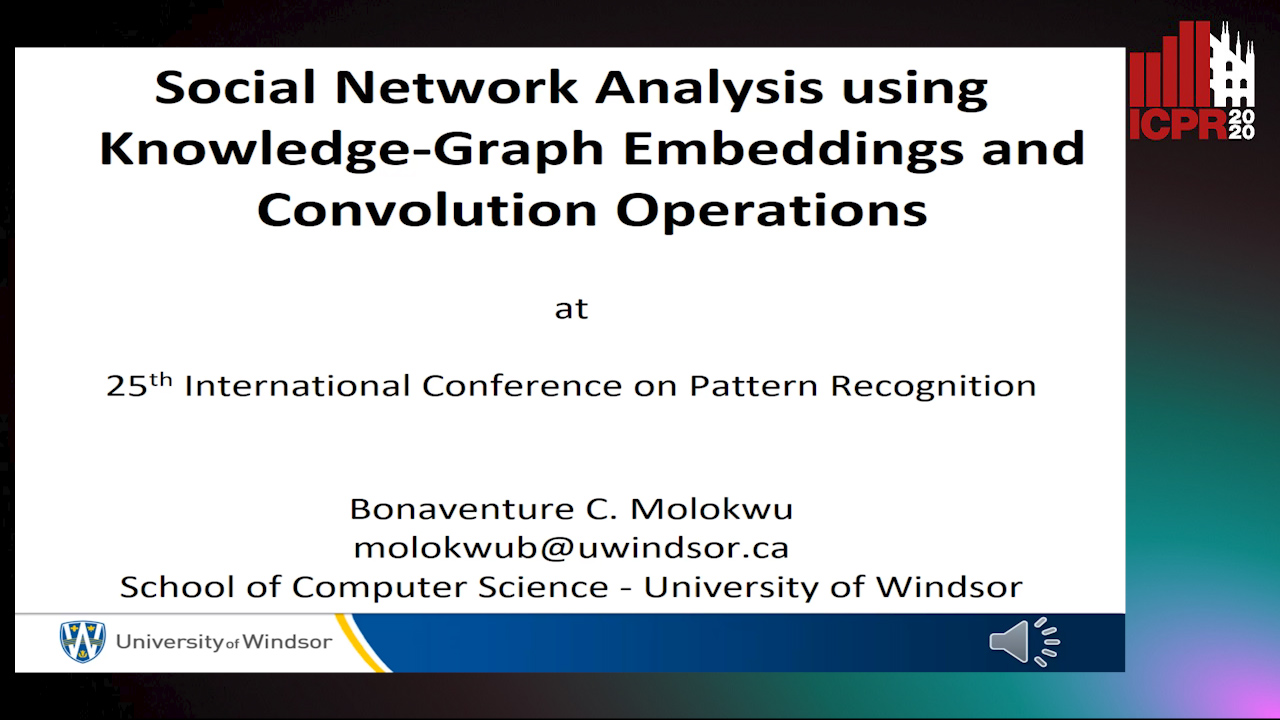
Auto-TLDR; RLVECO: Representation Learning via Knowledge- Graph Embeddings and Convolution Operations for Social Network Analysis
Abstract Slides Poster Similar
A Bayesian Deep CNN Framework for Reconstructing K-T-Undersampled Resting-fMRI
Karan Taneja, Prachi Kulkarni, Shabbir Merchant, Suyash Awate

Auto-TLDR; K-t undersampled R-fMRI Reconstruction using Deep Convolutional Neural Networks
Abstract Slides Poster Similar
Combining GANs and AutoEncoders for Efficient Anomaly Detection
Fabio Carrara, Giuseppe Amato, Luca Brombin, Fabrizio Falchi, Claudio Gennaro

Auto-TLDR; CBIGAN: Anomaly Detection in Images with Consistency Constrained BiGAN
Abstract Slides Poster Similar
More Correlations Better Performance: Fully Associative Networks for Multi-Label Image Classification

Auto-TLDR; Fully Associative Network for Fully Exploiting Correlation Information in Multi-Label Classification
Abstract Slides Poster Similar